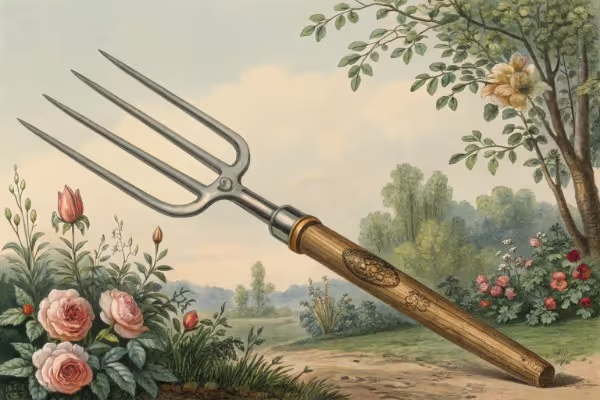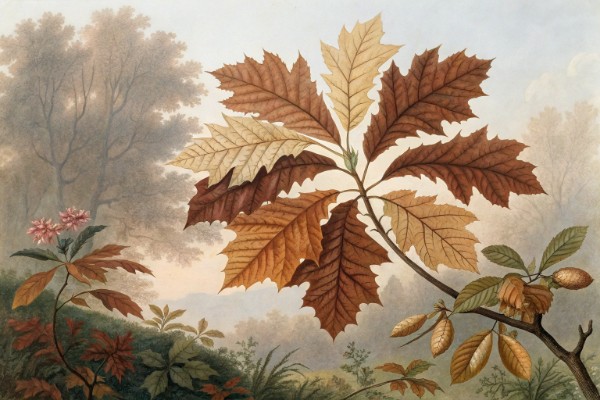Overcoming Smart Phone Addiction With Gardening

phone addiction
To break free from phone addiction, swap scrolling screens for turning soil—gardening reduces cortisol levels, boosts serotonin, and refocuses scattered attention spans. Studies show that plant-tending slashes smartphone use, enhances mood, and restores cognitive clarity disrupted by phone addiction. Replace digital habits with earthy rituals, and discover why gardening offers the escape hatch your weary brain craves.
Cheatsheet: Grow Focus, Shrink Screen Time
🌱 Set a Clear Goal
- Decide: 30+ min outdoors daily = less scrolling
- Schedule gardening after typical screen times
- Stat: 42% report improved mood after gardening (UK NHS)
🛑 Limit Triggers
- Silence or stash phone in a drawer before gardening
- Activate airplane mode or focus setting
- Replace screen-urge with hands-in-soil tasks
🌻 Grow Attention
- Choose sensory plants (herbs, scented flowers, tomatoes)
- Observe growth, smell, and touch—anchor in present
- Reap satisfaction from visible progress: dopamine, not dopamine hits
💪 Boost Health & Nutrition
- Burn 200-400 kcal/hr gardening
- Fresh produce improves dietary quality
- Exposure to daylight balances circadian rhythm
- Hands in soil = serotonin boost
👩🌾 Tools and Products You'll Need
- Gloves
- Hand trowel, pruners
- Watering can/hose
- Seeds or seedlings (herbs, leafy greens, flowers)
- Potting soil
- Planters or outdoor bed
🌒 Set Up Digital-Free Rituals
- Establish tech-free garden routines: watering, weeding, harvesting
- Share garden moments with family or friends offline
- Compare your daily screen time after a week
Overcoming Phone Addiction With Gardening
I used to pocket my phone before stepping into the beds and still ping through a pruning session like a distracted metronome. Then I laid it on the potting bench, set a kitchen timer, and watched my attention germinate like arugula in spring.
Phone addiction is attention drift with a glossy screen. Soil fixes drift, if you give it half a chance.
The horticultural brain reset
Hands in soil demand proprioception and smell and micro-adjustments, which leaves fewer cognitive scraps for doomscrolling. That tug of roots under the fingernails beats any notification buzz.
“People touch their phones 2,617 times per day on average.” dscout longitudinal study, 2016.
Gardening flips the script because repetitive, purposeful tasks induce quiet focus. A meta-analysis found gardening reduces depression and anxiety and lifts life satisfaction across age groups (Soga, Gaston, Yamaura, Preventive Medicine Reports, 2017).
Even the mere presence of a phone reduces available brainpower, powered off or not, if it sits within reach. Ward et al., Journal of the Association for Consumer Research, 2017.
Field rules that broke my twitchy thumb
- Leave the phone in a metal toolbox or Faraday sleeve at the gate, which kills signals and temptation.
- Wear a cheap analog watch and use a mechanical timer clipped to your belt.
- Keep a weatherproof notebook and pencil in a zip bag for notes, sketches, and sowing dates.
- Batch calls after sundown while you coil hoses, never mid-task.
- Use one ringtone only for true emergencies and keep everything else silent.
- Photograph harvests at the end, never during the work set.
I call it gate discipline. Gloves on, phone off.
Task protocols that crowd out the urge to check
Weeding sets, Pomodoro-style
Work a single bed for 25 minutes, stand, stretch, sip water for 5, then switch tools and continue. No peeking until the bed is finished and the timer rings.
Compost day
Turn the heap and stab an analog compost thermometer to track 130 to 160 F, which is 54 to 71 C. Jot temps on the bin lid with a grease pencil and watch the steam roll like a kitchen service line.
Watering rounds
Forget the app forecasts and watch the soil’s sheen and crumb, which growers call tilth. Aim for 1 inch of water per week in summer, about 25 mm, and verify with a low-tech rain gauge.
Seed sowing
Count seeds aloud and feel depth with the first knuckle as a guide, roughly 0.5 inch or 1.2 cm for beans. Label with wooden stakes and a paint marker, then press the row firm to seal capillarity.
Pruning
Trace the cambium ridge with your eyes and cut clean to the branch collar. Two-handed secateurs keep both palms busy and your mind inside the canopy.
Plants that soothe restless thumbs
- Lamb’s ear and woolly thyme for tactile grounding that slows breath on contact.
- Scented geranium, rosemary, and lemon balm to trigger deep nasal inhalations that cut heart rate.
- Ornamental grasses like Calamagrostis and Pennisetum for wind music and moving light.
- Snapdragons and peas for fine-motor therapy while deadheading and stringing vines.
These are not decoration to me. They are sensory tools with roots.
Data without dopamine
I track phenology with a wall calendar, not a screen. First blossom, first bumblebee, first hard frost at 28 F or minus 2 C get a mark and a quick note.
Yield logs live in a spiral notebook, no badges, no graphs, just pounds and kilos side by side. The act of writing cements memory better than tapping.
Evidence check you can feel
Five minutes of “green exercise” improves mood and self-esteem, with bigger gains near water and in mixed habitats. Barton and Pretty, Environmental Science and Technology, 2010.
Horticultural activity lowers cortisol and lifts vigor compared to indoor tasks. Park et al., Journal of Physiological Anthropology, 2010.
My favorite low-tech swaps to beat the scroll
- Pocket notebook over notes apps, with waterproof paper if you irrigate.
- Analog rain gauge over phone weather, mount at plant height for accuracy.
- Dial timer over timer apps, loud bell you can hear over a chipper.
- Grease pencil on greenhouse plastic over digital whiteboards.
- Soil thermometer with a 5 inch or 13 cm probe over app-based sensors.
- Clip-on tally counter for seed counts over counting on-screen.
- Printed sowing calendar taped to the shed door over notifications.
Buying guide for gear that respects your attention
- Mechanical timers: metal case, 60 to 120 minutes, clear bell, 10 to 30 USD or 9 to 28 EUR.
- Faraday sleeves or locking pouches: durable fabric with RF shielding, look for double-layer foil, 15 to 60 USD or 14 to 57 EUR.
- Field notebooks: weatherproof paper, stitched binding, 3 by 5 inches or 7.6 by 12.7 cm, 6 to 18 USD or 6 to 17 EUR.
- Analog rain gauges: easy-read inches and millimeters, frost-proof acrylic, 12 to 35 USD or 11 to 33 EUR.
- Compost and soil thermometers: stainless stem, 5 to 20 inches or 13 to 50 cm, glass lens, 20 to 50 USD or 19 to 47 EUR.
- Secateurs: bypass style, replaceable spring, 0.75 inch or 2 cm cut capacity, 35 to 80 USD or 33 to 75 EUR.
- Work belt with tool loops: breathable, fits a timer and tally counter, 20 to 45 USD or 19 to 42 EUR.
I buy once and sharpen often. Fewer choices means less fiddling and more plants.
Design tricks that make phones feel silly outside
- Build a potting bench at hip height with everything within reach, which shortens decision time.
- Stage tools by task in buckets: pruning bucket, weeding bucket, trellis bucket.
- Lay gravel or wood chips on paths so you hear your own pace.
- Set a small stool near each bed to invite kneeling and looking close at leaf undersides.
- Hang a wind chime near the gate as a reset tone that beats any ringtone.
Attention grows where friction falls. I stack the deck toward plants, not pings.
Workflows that build flow
Single-channel days beat scattershot days, so I prune all stone fruit in one sweep. Monotony turns into flow once the cuts and angles take over your hands.
I avoid “just checking” by putting the phone physically behind a door. Out of sight means my prefrontal cortex stops bracing for alerts.
FAQ quick hits
Will a smartwatch sabotage this. Yes, unless you flip it to airplane and use it as a plain watch.
Need plant ID help. Sketch the leaf and write the site conditions and check a field guide later.
Want photos without falling into feeds. Shoot at the end with a dedicated camera, or batch-transfer after dark.
Worried about missing family calls. Give them a landline number for the shed or a single override tone.
Mini-challenges that cured my reflex
- Seven-day gate pledge: no phone past the latch, period.
- One-bed rule: no screen until a full bed is finished, including cleanup.
- Analog Sunday: paper calendar only, sharpen tools, plan the week by hand.
- Twilight rounds: 20 minutes of bare-handed deadheading at dusk, phone in the house.
By day four the phantom buzz faded. By day ten I could hear bees change pitch right before a storm.
For the data-hungry who still crave proof
Track your own metrics for a month with pencil: screen minutes per day, resting heart rate, hours outside, grams or ounces harvested. Compare weeks with three or more garden sessions to weeks without.
The line usually bends the way plants lean toward light. That curve is hard to argue with.

Want smarter plant choices? 🪴
FAQ: Gardening as an Antidote to Phone Addiction
How can gardening redirect focus away from phone addiction?
Immersing your hands into fertile soil and nurturing plants shifts attention from virtual screens to tactile experiences. Gardening demands presence and cultivates mindfulness, associating reward not with digital validation, but with the tangible growth of living things.
What types of gardening tasks best distract from compulsive phone use?
Choose tasks that fully engage mind and body—pruning branches, transplanting seedlings, or harvesting fruits and vegetables. These activities require careful attention and help to build a sense of accomplishment that eclipses phone addiction.
Can gardening genuinely diminish the impulse to constantly check smartphones?
Absolutely. The rhythm and rituals of tending to plants anchor your mind into the present. Over time, the garden's natural cycles of growth replace the artificial rush of notifications, weakening the hold smartphones have on your senses.
What are some easy starter plants for someone trying to spend less time on their phone?
Begin with resilient, low-maintenance plants such as herbs—mint, basil, rosemary—or easy-to-grow vegetables like cherry tomatoes or radishes. Their steady progress offers satisfying feedback, encouraging habitual tending instead of habitual scrolling.
Does gardening provide mental health benefits beyond addressing phone dependence?
Indeed, gardening sparks relaxation, creativity, and contentment. The therapeutic rituals of watering, pruning, and harvesting anchor your mind in tranquility, diminishing anxiety and offering a meaningful alternative to digital dependency.
Step away from phone addiction and let your hands get dirty in the soil. Gardening doesn’t ping, buzz, or demand a swipe—just your patience and your presence. Each seed you plant is a small rebellion against the relentless pull of screens. The garden rewards you with real growth, real flavor, and the kind of peace you can't scroll for. Try leaving the phone inside, or slip it in an old gardening apron; you’ll notice how quickly your mind settles and your senses wake up. In the end, it’s the simplest acts—digging, weeding, watering—that remind us how to be fully human again. Let the garden be your escape from distraction, and you'll find what really matters is right at your fingertips.
Gardening to Counteract Screen-Related Health Risks
Restore Eyesight and Eye Comfort
- 20-20-20 rule: After each 20 minutes screen use, view greenery 20 feet (6 meters) away for 20 seconds to decrease digital eye fatigue.
- Bright outdoor light prompts dopamine secretion, reducing near-sightedness (myopia) progression naturally.
Revitalize Brain Chemistry
- Gardening boosts serotonin through beneficial soil bacteria (Mycobacterium vaccae) absorbed via skin contact, balancing mood disrupted by excessive phone usage.
- Daily sunlight exposure of 15–20 minutes raises vitamin D synthesis, strengthening mental health and mood stability.
Correct Poor Posture and Joint Strain
- Gentle gardening movements—squatting, bending, stretching—reverse smartphone-induced hunched posture and strengthen core muscle groups.
- Regular practice (2–3 weekly garden sessions of at least 20 minutes) improves spinal alignment and decreases stiffness from excessive device use.
Manage Better Sleep Patterns
- Early morning gardening (before 9 AM) regulates circadian rhythms disrupted by nighttime blue-light exposure, supporting deeper sleep cycles.
- Evening gardening (45 minutes before sundown) signals body to secrete melatonin naturally, preparing restful sleep.
Enhance Hand and Wrist Health
- Light pruning and soil turning exercises finger dexterity, preventing repetitive strain injury associated with texting and scrolling.
- Using ergonomic gardening tools alleviates tension, promotes mobility, and improves grip weakened by excessive smartphone use.
Stimulate Cognitive Clarity and Focus
- Short hourly gardening breaks (10–15 minutes) increase cognitive clarity by minimizing multitasking and boosting concentration.
- Active interaction with plants and soil improves short-term memory retention and mental sharpness, negatively impacted by screen multitasking.
Build Nutritional Self-Sufficiency
- Growing edible plants reduces processed snack reliance linked to prolonged phone sessions, promoting balanced nutrition.
- Herbs rich in antioxidants—basil, rosemary, thyme—grown at home provide dietary support to counter oxidative stress from device radiation.
Find out which plants will thrive in your garden!
Answer a few fun questions and get custom plant recommendations perfect for your space. Let’s grow something amazing together!

start your season





